- Home
- Patrick Robinson
Kilo Class Page 2
Kilo Class Read online
Page 2
“Jesus.”
“If those Kilos are there,” said Admiral Mulligan, “we wouldn’t dare send a carrier in. They’d be waiting. They could actually hit us, then plead we were invading Chinese waters with a Battle Group, that we had no right to be in there.”
“Hmmm. Do we have a solution?”
“Yessir. The Chinese must not be allowed to take delivery of the final eight Kilos.”
“We persuade the Russians not to fulfill the order?”
“Nossir,” said Admiral Morgan. “That is unlikely to work. We’ve been trying. It’s like trying to persuade a goddamned drug addict he doesn’t need a fix.”
“Then what do we do?”
“We use other methods of persuasion, sir. Until they abandon the idea of Russian submarines.”
“You mean…”
“Yessir.”
“That will cause an international uproar.”
“It would, sir,” replied Admiral Morgan. “If anyone knew who had done what, to whom. But they’re not going to know.”
“Will I know?”
“Not necessarily. We probably would not bother you about the mysterious disappearance of a few foreign diesel-electric submarines.”
“Gentlemen, I believe this is what you describe as a Black Operation?”
“Yessir. Nonattributable,” replied the CNO.
“Do you require my official permission?”
“We need you to be with us, sir,” said Admiral Dunsmore. “If you were to forbid such a course of action, we would of course respect that. If you approve, we will in time require something official, however. Right before we move.”
“Gentlemen, I trust your judgment. Please proceed as you think fit. Scott, keep me posted.”
And with that, the President terminated the conversation. He rose and shook hands with each of his five senior commanders. And he watched them walk from the Oval Office, feeling himself, as ever, not quite an equal in the presence of such men. And he pondered again the terrible responsibilities that were visited upon him in this place.
1
CAPTAIN TUG MOTTRAM COULD ALMOST FEEL the barometric pressure rising. The wind had roared for two days out of the northwest at around forty knots and was now suddenly increasing to fifty knots and more as it backed. The first snow flurries were already being blown across the heaving, rearing lead-colored sea, and every forty seconds gigantic ocean swells a half-mile across surged up behind. The wind and the mountainous, confused sea had moved from user-friendly to lethal in under fifteen minutes, as it often does in the fickle atmospherics of the Southern Ocean—particularly along the howling outer corridor of the Roaring Forties where Cuttyhunk now ran crosswind, gallantly, toward the southeast.
Tug Mottram had ordered the ship battened down two days ago. All watertight doors were closed and clipped. Fan intakes were shut off. No one was permitted on the upper deck aft of the bridge. The Captain gazed out ahead, through snow that suddenly became sleet, slashing sideways across his already small horizon. The wipers on the big wheelhouse windows could cope. Just. But astern the situation was deteriorating as the huge seas from the northwest, made more menacing by the violent cross-seas from the beam, now seemed intent on engulfing the 279-foot steel-hulled research ship from Woods Hole, Massachusetts.
“Decrease speed to twelve knots,” Mottram said. “We don’t wanna run even one knot faster than the sea. Not with the rear end design of this bastard.”
“You ever broached, sir?” the young navigation officer, Kit Berens, asked, his dark, handsome features set in a deep frown.
“Damn right. In a sea like this. Going just too fast.”
“Christ. Did the wave break right over you?”
“Sure did. Pooped her right out. About a billion tons of green water crashed over the stern, buried the rear gun deck and the flight deck, then flooded down the starboard side. Swung us right around, with the rudders clear out of the water. Next wave hit us amidships. I thought we were gone.”
“Jesus. What kind of a ship was it?”
“US Navy destroyer. Spruance. Eight thousand tons. I was driving her. Matter of fact it makes me downright nervous even to think about it. Twelve years later.”
“Was it down here in the Antarctic, sir? Like us?”
“Uh-uh. We were in the Pacific. Far south. But not this far.”
“How the hell did she survive it?”
“Oh, those Navy warships are unbelievably stable. She heeled right over, plowed forward, and came up again right way. Not like this baby. She’ll go straight to the bottom if we fuck it up.”
“Jesus,” Kit said, gazing with awe at the giant wall of water that towered above Cuttyhunk’s highly vulnerable, low-slung aft section. “We’re just a cork compared to a destroyer. What d’we do?”
“We just keep running. A coupla knots slower than the sea. Stay in tight control of the rudders. Keep ’em under. Hold her course, stern on to the bigger swells. Look for shelter in the lee of the islands.”
Outside, the wind was gusting violently up to seventy knots as the deep, low-pressure area sweeping eastward around the Antarctic continued to cause the daylong almost friendly northwester to back around, first to the west, and now, in the last five minutes, to the cold southwest.
The sea was at once huge and confused, the prevailing ocean swells from the northwest colliding with the rising storm conditions from the southwest. The area of these fiercely rough seas was relatively small given the vastness of the Southern Ocean, but that was little comfort to Tug Mottram and his men as they climbed eighty-foot waves. Cuttyhunk was right in the middle of it, and she was taking a serious pounding.
The sleet changed back to snow, and within moments small white drifts gathered on the gunwales on the starboard bow. But they were only fleeting; the great sea continued to hurl tons of frigid water onto the foredeck. In the split second it took for the ocean spray to fly against the for’ard bulkhead, it turned to ice. Peering through the window, Tug Mottram could see the tiny bright particles ricochet off the port-side winch. He guessed the still-air temperature on deck had dropped to around minus five degrees C. With the windchill of a force-ten gale, the real temperature out there was probably fifteen below zero.
Cuttyhunk pitched slowly forward into the receding slope of a swell, and Tug could see Kit Berens in the doorway to the communications room, stating their precise position. “Right now, forty-eight south, sixty-seven east, heading southeast, just about a hundred miles northwest Kerguelen Island…”
He watched his twenty-three-year-old navigator, sensed his uneasiness, and muttered to no one in particular, “This thing is built for a head sea. If we have a problem, it’s right back there over the stern.” Then, louder and clearer now, “Watch those new swells coming in from the beam, Bob. I’d hate to have one of them slew us around.”
“Aye, sir,” replied Bob Lander, who was, like Tug himself, a former US Navy lieutenant commander. The main difference between them was that the Captain had been coaxed out of the Navy at the age of thirty-eight to become the senior commanding officer at the Woods Hole Oceanographic Institute. Whereas Bob, ten years older, had merely run out his time in dark blue, retiring as a lieutenant commander, and was now second in command of the Cuttyhunk. They were both big, powerful men, natives of Cape Cod, lifelong seamen, lifelong friends. Cuttyhunk, named after the most westerly of the Elizabeth Islands, was in safe hands, despite the terrifying claws of the gale that was currently howling out of the Antarctic.
“Kinda breezy out there now,” said Lander. “You want me to nip down and offer a few encouraging words to the eggheads?”
“Good call,” said Mottram, “Tell ’em we’re fine. Cuttyhunk’s made for this weather. For Christ’s sake don’t tell ’em we could roll over any minute if we don’t watch ourselves. This goddamned cross-sea is the worst I’ve seen in quite a while. There ain’t a good course we can heave-to on. Tell ’em I expect to be behind the islands before long.”
Down be
low, the scientists had ceased work. The slightly built bespectacled Professor Henry Townsend and his team were sitting together in a spacious guest lounge that had been deliberately constructed in the middle of the ship to minimize the rise-and-fall effect of a big sea. Townsend’s senior oceanographer, Roger Deakins, a man more accustomed to operating in a deep-diving research submarine, was already feeling a bit queasy.
The sudden change in weather had taken them all by surprise. Kate Goodwin, a tall, thoughtful scientist with a doctorate from the joint MIT/Woods Hole Oceanography Program, was belatedly dispensing tablets for seasickness to those in need.
“I’ll take a half-pound of ’em,” said Deakins.
“You only need one,” said Kate, laughing.
“You don’t know how I feel,” he replied.
“No. Thank God,” she said, a bit wryly. Their banter was interrupted by an icy blast through the aft door and the dramatic appearance of a snowman wearing Bob Lander’s cheerful face.
“Nothing to worry about, guys,” he said, shaking snow all over the carpet. “Just one of those sudden storms you get down here, but we should find shelter tonight. Best stay below right now, till the motion eases. And don’t worry about the banging and thumping you can hear up front—we’re in a very uneven sea, waves hitting us from different directions. Just remember this thing’s an icebreaker. She’ll bust her way through anything.”
“Thanks, Bob,” said Kate. “Want some coffee?”
“Christ, that’s a good idea,” he said. “Black with sugar, if it’s no trouble. Can I take one up to the Captain, same way?”
“Yessir,” she said. “Why don’t I give you a pot of it? I’ll clip it down, save you throwing it all over the deck.”
Bob Lander chatted to Professor Townsend for a few minutes while he waited for the coffee, but he wasn’t really listening to the American expert on the unstable southern ozone layer. He was preoccupied with the grim Antarctic storm and by the thumps against the bow, the dull, shuddering rhythmic thud of the big waves. There were too many of them. And a couple of times Bob sensed a more hollow clang, although the sound was muffled in this part of the ship. It was the pattern that bothered him, not the noise. He quickly excused himself, telling Kate he’d be right back, and stepped out into the gale, making his way up the companionway toward the bridge.
Outside he could really hear the shriek of the storm, the wind slicing through the upperworks, moaning across the great expanse of the water, then rising to a ghastly higher pitch with each thunderous gust. The sound of Cuttyhunk lurching forward into the waves had an eerie beat of its own: the big thump of the bow, followed by the slash of the spray across the ship, and the staccato clatter-clatter-clatter of a steel hawser from a topping lift whacking against the after mast. Bob Lander could see ice forming along the tops of the rails and on the winch covers. If this had been winter the ice would soon have required men with axes to hack it off before it became too heavy for the plunging foredeck. But at this time of year the temperature would rise when the storm passed.
“One heck of a summer day,” Bob muttered as he shoved his way through the bridge door, listening carefully for the odd noise he had heard below. Tug Mottram had also heard something. He turned to face Lander and spoke formally in the terse language of the US Navy. “Go and check that out will you, Bob. It’s for’ard I think. And for Christ’s sake be careful. Take a coupla guys with you.”
Bob Lander made his way down to the rolling deck and rounded up a couple of seamen from the crew dormitory. All three changed into wet suits and pulled on special combination fur-lined Arctic oilskins, sea boots, and safety harnesses. They clipped onto the steel safety lines and fought their way across the foredeck, where the noise grew louder. Every time the ship rode up, there was a mighty thump against the bow.
“FUCK IT!” roared Bob Lander above the wind. “It’s that FUCKING anchor again. Worked loose just like it did in that sea off Cape Town.” And now he yelled across to Billy Wrightson and Brad Arnold, “WE’LL TIGHTEN UP ON THAT BOTTLE SCREW STOPPER AGAIN. THEN LET’S GET DOWN INTO THE PAINT SHOP AND CHECK FOR DAMAGE.”
Just then a huge wave broke almost lazily over the bow. All three men were suddenly waist deep in the freezing water and were saved from going over the side only by the harnesses, which held them to the safety lines. For the next five minutes they heaved and tugged at the crowbar, tightening the stopper. They then struggled back to the bulkhead door and bumped and lurched their way to the paint shop. Bob Lander was secretly dreading the damage caused by the swinging half-ton anchor crashing against the hull.
As he opened the door to the forepeak area, tons of seawater surged out from the shop, sending all three men flying as it rushed through the lower deck. Lander, back on his feet, ordered Wrightson to have the engineer activate the pumps. Then he moved forward into the paint shop. The gaping hole on the starboard side two feet above the deck told him all he needed to know. The huge anchor had worked its way loose and had bashed a jagged rip into the steel plating of the hull. Worse yet, the seam between two plates had given way. “God knows how far down that rip might travel in a sea like this,” he thought.
Bob Lander knew two things had to be done. Fast. The hole had to be temporarily patched, and Cuttyhunk had to run for cover, out of this dangerous weather to the nearest safe anchorage, and make a proper repair.
He shouted to Brad Arnold to get together a group of six men, including the engineer, to go for’ard and shore up the bow inside the paint room and shut it off securely. “The anchor’s secure for the moment, so get to it, Brad. I don’t want that split to get one inch bigger, and I want the water confined to the one compartment. When you’ve done, set a watchkeeper at the bulkhead door.”
Bob Lander returned to the bridge and told Tug Mottram what the Captain had already guessed. “Bottle screw again, Bob?” Mottram asked.
“Yessir. We have the anchor back tight on the screw and properly wired down. But we have to find some good shelter. There’s a lot of water getting into the paint shop. You can see daylight through a big crack in the hull. Brad’s shoring up around the hole, but we need to weld it, real soon, otherwise I’m afraid it’ll run right down the seam. We can’t do that kinda job out here.”
“Okay, KIT! How far to Kerguelen?”
“Just about eighty miles, sir. At this speed we ought to be in there sometime around 0400.”
“Okay, check the course.”
“Present course is fine, we’ll come in past Rendezvous Rock, twelve miles north, then we can run down the leeward side into Choiseul Bay and hopefully get out of this goddamned weather.”
“This ain’t gonna get any better for a day or two. I guess we’ll have to cope with a beam sea, Kit, but if we stay to the east side of the Ridge, it should be a bit calmer. I don’t suppose the eggheads will be too happy altering course away from their research area.”
“Guess not, sir. But they’d probably be a lot less happy if the bow split and we went to the bottom.”
“This is not a life-threatening situation, Kit,” said Bob Lander quietly. “Just a nuisance we don’t want to get any worse. I’ll go below and check the patch-up operation in the paint shop, sir.”
At 1957 Tug Mottram ordered a short satellite communication to the command center at Woods Hole—“Position 48.25S 67.25E…intended movement 117-12 knots. Going inshore. Proceeding to inspect and repair minor bow damage caused by heavy weather.”
At 1958 he adjusted course for the northwestern headland of the island of Kerguelen. At the end of the earth, and virtually uninhabited, Kerguelen’s icebound terrain is untrammeled by the feet of man, save for a few Frenchmen at their weather station at Port-aux-Français in the remote southeast corner of the island.
No ships pass by this godforsaken rocky wasteland for months on end. No commercial airlines fly overhead. No military power has any interest in checking out the place. As far as anyone knows, no submarine has passed this way in more than half a century. Not
even the all-seeing American satellites bother to cast an eye upon this craggy wilderness, which measures eighty miles long from west to east, and fifty-five miles north to south. Save for the huge rookeries of king penguins, and a plague of rabbits, Kerguelen may as well be on the moon. It is a huddle of frozen rocks rising out of the Southern Ocean, perhaps the loneliest place on this planet. It stands stark on the 69 degree easterly line of longitude, latitude 49.30 south. Gale-swept almost nonstop for twelve months of the year, Kerguelen is in fact an archipelago of much smaller islands set into a great uneven L-shaped mainland, and represents the tip of a vast underwater range of mountains that stretches for 1,900 miles, due southeast from latitude 47S right down to the eastern end of the Shackleton Ice Shelf. To the west of this colossal range, known as the Kerguelen-Gaussberg Ridge, the ocean is more than three miles deep. On the other side it falls away to more than four miles.
The whole concept of the place made Tug Mottram shudder. But he knew his job, and he knew how important that unseen range of subsurface mountains was to the Woods Hole scientists aboard his ship.
Vast clouds of tiny shrimplike creatures known as krill, a critical ingredient to the Antarctic food chain, swim in the craggy underwater peaks of the Ridge. The krill are devoured by a large network of deep-sea creatures: fish, squid, seals, and several species of whale, including the humpback. In turn the killer whale eats other whales and seals. Penguins feed on the small fish and squid that eat the krill. Flying birds also eat the krill, the fish, and the squid. The krill are so critical the ecosystem would collapse without them.
The Woods Hole scientific teams had discerned a sharp reduction in the krill population for several years. Professor Townsend believed that the krill were being wiped out by the ultraviolet rays streaming through the hole in the ozone layer that appears over the Antarctic in September. Furthermore his research studies suggested that the problem was worsening, and he now believed the ozone hole was growing steadily larger, much like the tear in Cuttyhunk’s hull.

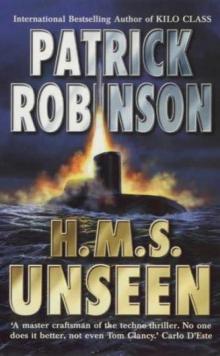 H.M.S. Unseen am-3
H.M.S. Unseen am-3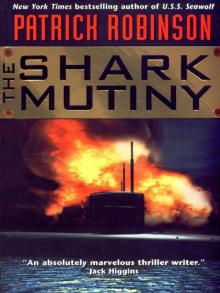 The Shark Mutiny (2001)
The Shark Mutiny (2001)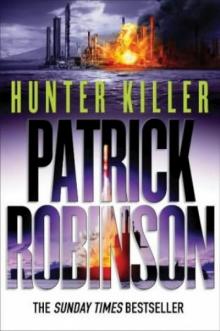 Hunter Killer am-8
Hunter Killer am-8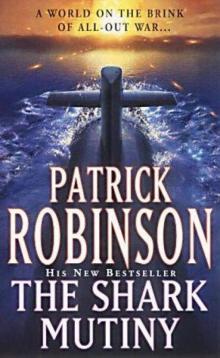 The Shark Mutiny am-5
The Shark Mutiny am-5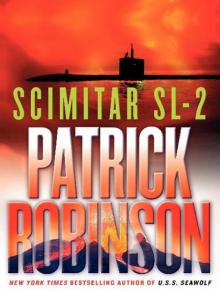 Scimitar SL-2
Scimitar SL-2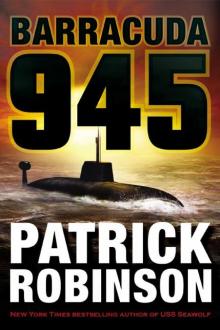 Barracuda 945 am-6
Barracuda 945 am-6 Hunter Killer
Hunter Killer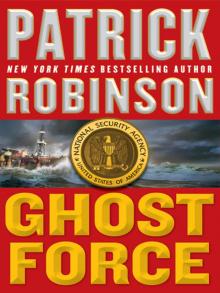 Ghost Force
Ghost Force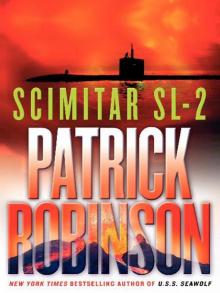 Scimitar SL-2 (2004)
Scimitar SL-2 (2004) Kilo Class am-2
Kilo Class am-2 The Lion of Sabray
The Lion of Sabray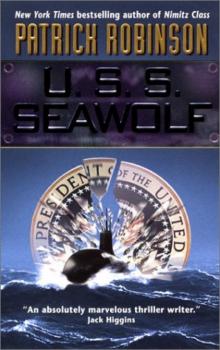 U.S.S. Seawolf am-4
U.S.S. Seawolf am-4 Ghost Force am-9
Ghost Force am-9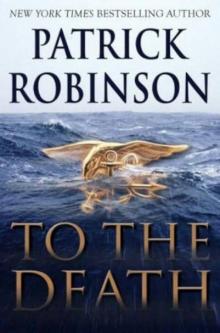 To the Death am-10
To the Death am-10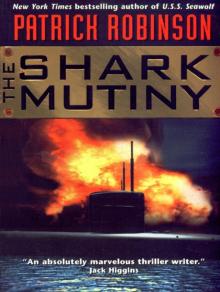 The Shark Mutiny
The Shark Mutiny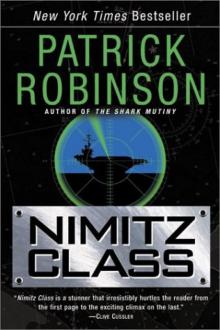 Nimitz Class am-1
Nimitz Class am-1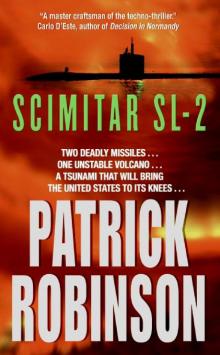 Scimitar SL-2 am-7
Scimitar SL-2 am-7 Barracuda 945
Barracuda 945 Intercept
Intercept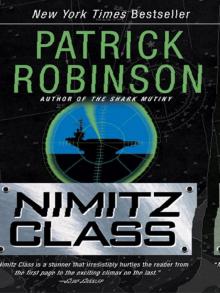 Nimitz Class (1997)
Nimitz Class (1997)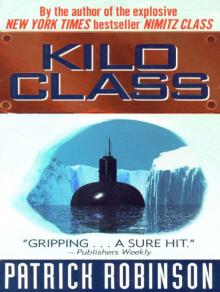 Kilo Class
Kilo Class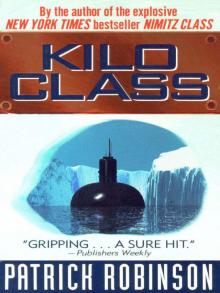 Kilo Class (1998)
Kilo Class (1998) Diamondhead
Diamondhead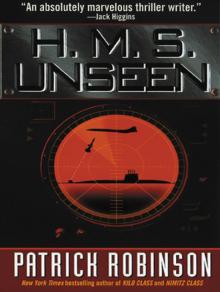 H.M.S. Unseen
H.M.S. Unseen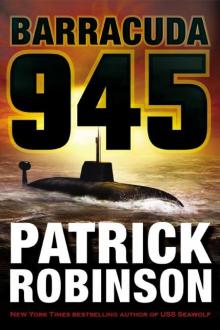 Barracuda 945 (2003)
Barracuda 945 (2003)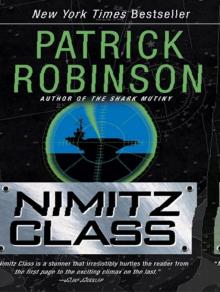 Nimitz Class
Nimitz Class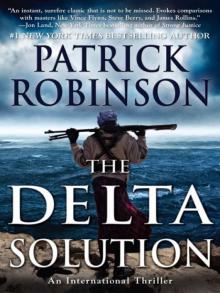 The Delta Solution
The Delta Solution U.S.S. Seawolf
U.S.S. Seawolf